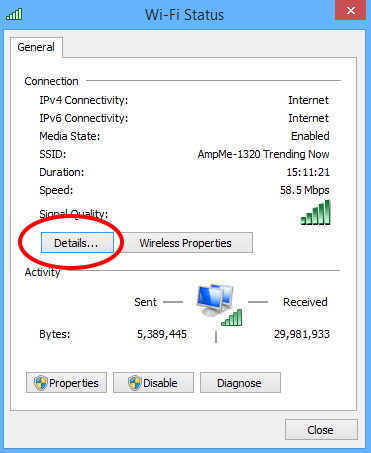

Inner Join v_RA_System_IPSubnets D ON A.ResourceID=D.ResourceID Inner join v_GS_NETWORK_ADAPTER_CONFIGUR C ON A.ResourceID=C.ResourceID Inner join v_FullCollectionMembership B on A.ResourceID=B.ResourceID

SCCM REPORT TO LIST IP ADDRESSES – LITE VERSION I normally just run the queries directly on the SQL DB, but you can also use SCCM Reporting and SCCM Queries under Monitoring. Here are some common methods for dealing with IP addresses. So, when viewed, you’ll see 1-6 (or more) IP addresses all crammed together. In this case dirty little secret of Microsoft, and why you don’t see IP address columns in the SCCM console, is that MS stores all the IP addresses of a machine into a single row, into an array. #PRM: # will prompt the user to enter information, the message prompt and data type will match that of the field you have targeted. The WHERE statement is the condition by which results are filtered. FROM SMS_R_SystemįROM statement indicates which table the information is stored in, in this case SMS_R_SYSTEM WHERE SMS_R_System.MACAddresses = #PRM:SMS_R_System.MACAddresses# You can use the query builder to add/remove fields to your preference. The SELECT statement is used to decide what information you would like retrieved by the Query in this case the following: SMS_R_System.Name Query Statement Explained SELECT SMS_R_System.Name, SMS_R_System.MACAddresses You will be presented with the results for a particular MAC address.> Enter the MAC Address you would like to query WHERE SMS_R_System.MACAddresses = #PRM:SMS_R_System.MACAddresses# > Paste the following query into the Query Statement SELECT SMS_R_System.Name, SMS_R_System.MACAddresses > Comments: Brief description of what the query is for > Name: All Systems – Find Clients with a given MAC Address Having a browse around turns out this functionality already exists! There are many ways to skin this particular cat but this seemed like a viable scenario to demo a how to query the ConfigMgr database to scan for instances where a client had a particular MAC Address. In this case the end-point would not behave as expected as the deployments the client would receive may not be the ones you expected. We discovered an issue on a client site where multiple distinct clients could have the same MAC address. Using SCCM to query the ConfigMgr database to find clients with duplicate MAC addresses.


 0 kommentar(er)
0 kommentar(er)
